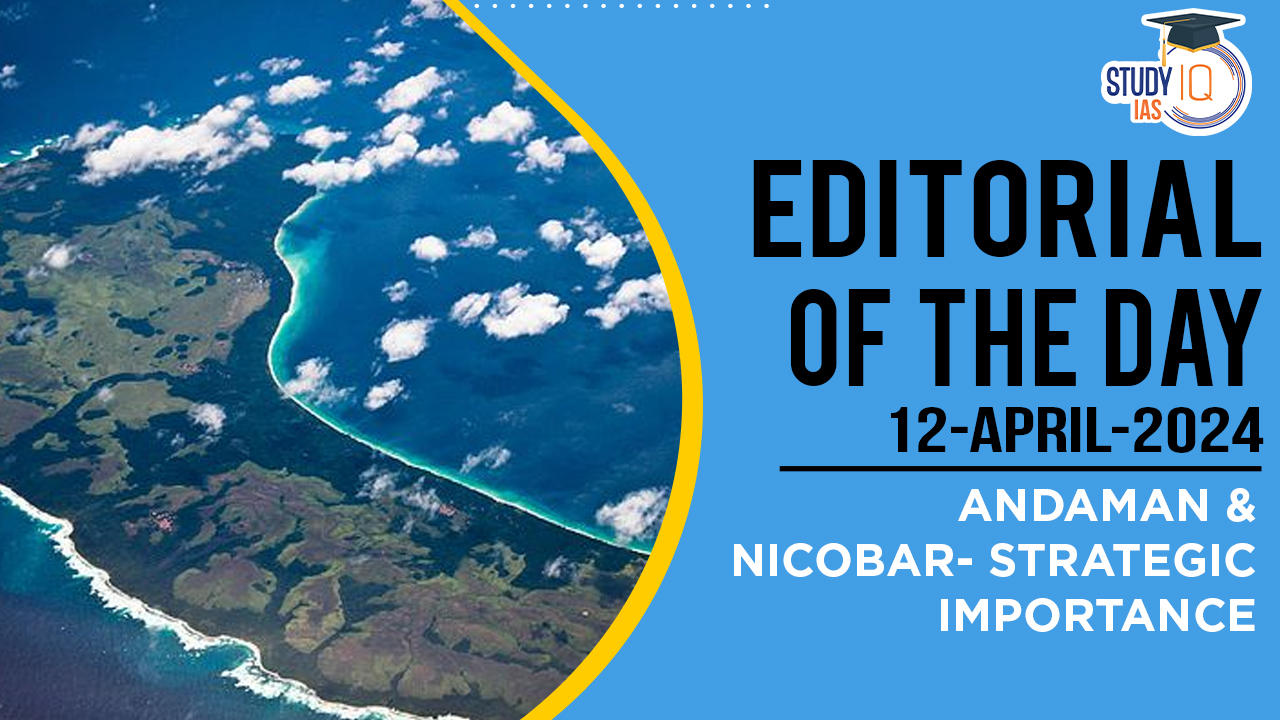Table of Contents
Context: The Indian government is undertaking significant efforts to transform the Andaman and Nicobar Islands into a key security and strategic node in the Indo-Pacific region.
Historical Context of Andaman and Nicobar Islands
- Initially a penal colony post-1857 War of Independence, these islands were places of incarceration for Indian revolutionaries.
- Known as ‘kalapani’, they were long neglected due to their remoteness and symbolic darkness.
- Military and Strategic Developments: The Indian Navy first established a “naval garrison” in 1962 after a Chinese submarine sighting.
- This initial deployment consisted of 150 sailors across the extensive archipelago of 836 islands spread over 450 miles.
- Japanese Occupation During WWII: The islands were occupied by Japan in February 1942 after the fall of Singapore and were briefly declared “liberated” by Netaji Subhas Chandra Bose in 1943 before reverting to British control post-WWII.
- Post-Independence Strategic Concerns: There were proposals by British officials post-Partition to retain the islands due to their strategic location, but these were ultimately handed over to India.
- Cold War and Later Years: During the 1965 India-Pakistan war, there was an indication from Indonesia about taking over the islands, though no action was taken.
- Post-Kargil War in 2001, the islands saw the establishment of India’s first joint/unified operational command, the Andaman Nicobar Command (ANC), enhancing military coordination and capability.
Reasons for Neglect
- Focus on inward economic development.
- Dealing with the aftermath of Partition and the Chinese occupation of Tibet.
- Lack of strategic vision among policymakers.
Shift in Policy
- Since the 1990s, the Indian Navy has advocated for a stronger maritime focus.
- The NDA government under PM Modi has prioritised developing the Andaman and Nicobar Islands.
- This push is further emphasised by China’s growing naval presence in the Indian Ocean.
China’s Strategic Moves
- China regularly sends naval fleets to the Indian Ocean.
- China is building facilities in key coastal locations.
- China actively engages with island nations in the Indian Ocean.
- China views the Andaman and Nicobar Islands as a potential chokepoint for its access to the Indian Ocean.
A&N Geography and Strategic Position
- The islands are located near key regional players: 22 miles from Myanmar, 90 miles from Indonesia’s Aceh, and 270 miles from Thailand.
- They contribute 300,000 sq km to India’s exclusive economic zone, with significant undersea resource potential.
India’s Response
- India’s plans include expanding military infrastructure, improving communication networks, and permanently deploying troops in the Andaman and Nicobar Islands.
- The success of these plans hinges on swift and efficient execution.
- Recent Security Developments:
- The ANC is tasked with maintaining robust maritime domain awareness using various assets like radars, aircraft, satellites, and unmanned vehicles.
- Given the frequent movements of Chinese naval assets in nearby waters, there’s a heightened focus on anti-submarine warfare capabilities.
- Importance of the Malacca Strait:
- The strait is a critical maritime choke point through which about 30% of the world’s traded goods pass annually.
- The Great Nicobar Island’s proximity to this strait enhances its strategic value for controlling and monitoring naval and merchant shipping activities.
- Future Strategic Vision:
- There is an ongoing strategy to transform the islands into a significant maritime bastion that extends India’s defensive capabilities and ability to project power.
- Port Blair is envisioned as a regional hub for naval interoperability, focusing on various cooperative maritime activities like disaster relief, medical aid, anti-piracy efforts, and search and rescue operations.


 Disaster Mitigation Projects in India
Disaster Mitigation Projects in India
 Editorial of the Day (26 July): India's ...
Editorial of the Day (26 July): India's ...
 Kargil Vijay Diwas 2024, Date, History a...
Kargil Vijay Diwas 2024, Date, History a...

















